Effect of Graphene on Machinability of Glass Fiber Reinforced Polymer (GFRP)
Abstract
:1. Introduction
2. Materials and Methods
2.1. Materials Preparation
2.2. Machining Tests
2.3. Roughness Measurement
2.4. Short-Beam Tests
3. Results and Discussion
3.1. Cutting Forces
3.2. Roughness
3.3. Cutting Temperatures
3.4. Interlaminar Shear Strength
4. Conclusions
- GFRP machining generates enough heat to rapidly reach temperatures high enough to cause thermal damages to the epoxy matrix. A cutting length of 300 mm, produced cutting temperatures exceeding 160 °C.
- As a result of an increased thermal conductivity and lowered cutting forces, the laminate with graphene generates less heat while milling and lead to lower cutting temperatures.
- Cutting forces were lower on the modified laminate and brought a decrease in roughness by making the grooves produced by the chip removal process less deep.
- No deterioration of the interaction between fiber and matrix has been induced by the graphene.
- This research shows that fillers can successfully enhance FRP machining behavior. Adding a few amount (1 wt%) of graphene into the matrix has improved the machinability of the composite material.
Author Contributions
Funding
Acknowledgments
Conflicts of Interest
References
- Bathias, C.; Wolff, C. Matériaux Composites; Dunod: Paris, France, 2005; p. 417. [Google Scholar]
- Davim, J.P. Machining Composite Materials; ISTE: London, UK; John Wiley & Sons: Hoboken, NJ, USA, 2010; p. 262. [Google Scholar]
- Hintze, W.; Hartmann, D.; Schütte, C. Occurrence and propagation of delamination during the machining of carbon fibre reinforced plastics (CFRPs)—An experimental study. Compos. Sci. Technol. 2011, 71, 1719–1726. [Google Scholar] [CrossRef]
- Wang, C.; Ming, W.; An, Q.; Chen, M. Machinability characteristics evolution of CFRP in a continuum of fiber orientation angles. Mater. Manuf. Process. 2017, 32, 1041–1050. [Google Scholar] [CrossRef]
- Wang, X.M.; Zhang, L.C. An experimental investigation into the orthogonal cutting of unidirectional fibre reinforced plastics. Int. J. Mach. Tools Manuf. 2003, 43, 1015–1022. [Google Scholar] [CrossRef]
- Lasri, L.; Nouari, M.; El Mansori, M. Modelling of chip separation in machining unidirectional FRP composites by stiffness degradation concept. Compos. Sci. Technol. 2009, 69, 684–692. [Google Scholar] [CrossRef]
- Hamedanianpour, H.; Chatelain, J.F. Effect of tool wear on quality of carbon fiber reinforced polymer laminate during edge trimming. In Applied Mechanics and Materials; Trans Tech Publications: Stafa-Zurich, Switzerland, 2013; Volume 327, pp. 34–39. [Google Scholar]
- Yashiro, T.; Ogawa, T.; Sasahara, H. Temperature measurement of cutting tool and machined surface layer in milling of CFRP. Int. J. Mach. Tools Manuf. 2013, 70, 63–69. [Google Scholar] [CrossRef]
- Delahaigue, J.; Chatelain, J.F.; Lebrun, G. Influence of cutting temperature on the tensile strength of a carbon fiber-reinforced polymer. Fibers 2017, 5, 46. [Google Scholar] [CrossRef]
- Mullier, G.; Chatelain, J.F. Influence of Thermal Damage on the Mechanical Strength of Trimmed CFRP. Int. J. Mech. Aerosp. Ind. Mechatron. Manuf. Eng. 2015, 9, 1558–1566. [Google Scholar]
- Ghafarizadeh, S.; Lebrun, G.; Chatelain, J.F. Experimental investigation of the cutting temperature and surface quality during milling of unidirectional carbon fiber reinforced plastic. J. Compos. Mater. 2016, 50, 1059–1071. [Google Scholar] [CrossRef]
- Xu, J.; Li, C.; Dang, J.; El Mansori, M.; Ren, F. A study on drilling high-strength CFRP laminates: Frictional heat and cutting temperature. Materials 2018, 11, 2366. [Google Scholar] [CrossRef]
- Sheikh-Ahmad, J.Y.; Almaskari, F.; Hafeez, F. Thermal aspects in machining CFRPs: Effect of cutter type and cutting parameters. Int. J. Adv. Manuf. Technol. 2019, 100, 2569–2582. [Google Scholar] [CrossRef]
- Slamani, M.; Chatelain, J.F.; Hamedanianpour, H. Influence of machining parameters on surface quality during high speed edge trimming of carbon fiber reinforced polymers. Int. J. Mater. Form. 2018, 12, 331–353. [Google Scholar] [CrossRef]
- Mkaddem, A.; Ben Soussia, A.; El Mansori, M. Wear resistance of CVD and PVD multilayer coatings when dry cutting fiber reinforced polymers (FRP). Wear 2013, 302, 946–954. [Google Scholar] [CrossRef]
- Azmi, A.I.; Lin, R.J.T.; Bhattacharyya, D. Machinability study of glass fibre-reinforced polymer composites during end milling. Int. J. Adv. Manuf. Technol. 2013, 64, 247–261. [Google Scholar] [CrossRef]
- Geim, A.K.; Novoselov, K.S. The rise of graphene. Nat. Mater. 2007, 6, 183–191. [Google Scholar] [CrossRef] [PubMed]
- Balandin, A.A.; Ghosh, S.; Bao, W.; Calizo, I.; Teweldebrhan, D.; Miao, F.; Lau, C.N. Superior thermal conductivity of single-layer graphene. Nano Lett. 2008, 8, 902–907. [Google Scholar] [CrossRef] [PubMed]
- Lee, C.; Wei, X.; Kysar, J.W.; Hone, J. Measurement of the elastic properties and intrinsic strength of monolayer graphene. Science 2008, 321, 385–388. [Google Scholar] [CrossRef]
- Choi, W.; Lahiri, I.; Seelaboyina, R.; Kang, Y.S. Synthesis of graphene and its applications: A review. Crit. Rev. Solid State Mater. Sci. 2010, 35, 52–71. [Google Scholar] [CrossRef]
- Lentzakis, H.; Moghimian, N.; Saeidlou, S.; Song, N.; Kaydanova, T.; Poulin, J.; David, É. Mechanical, thermal and electrical property enhancement of graphene-polymer nanocomposites. In Proceedings of the Annual Technical Conference—ANTEC, Nashville, TN, USA, 4–8 May 2003; pp. 2174–2178. [Google Scholar]
- Moghimian, N.; Saeidlou, S.; Lentzakis, H.; Rosi, G.F.; Song, N.; David, E. Electrical conductivity of commercial graphene polyethylene nanocomposites. In Proceedings of the 2017 IEEE 17th International Conference on Nanotechnology, NANO, Pittsburgh, PA, USA, 25–28 July 2017; pp. 757–761. [Google Scholar]
- Zhang, C.; Li, T.; Song, H.; Han, Y.; Dong, Y.; Wang, Y.; Wang, Q. Improving the thermal conductivity and mechanical property of epoxy composites by introducing polyhedral oligomeric silsesquioxane-grafted graphene oxide. Polym. Compos. 2018, 39, E1890–E1899. [Google Scholar] [CrossRef]
- Chhetri, S.; Adak, N.C.; Samanta, P.; Mallisetty, P.K.; Murmu, N.C.; Kuila, T. Interface engineering for the improvement of mechanical and thermal properties of covalent functionalized graphene/epoxy composites. J. Appl. Polym. Sci. 2018, 135, 46124. [Google Scholar] [CrossRef]
- Kamar, N.T.; Hossain, M.M.; Khomenko, A.; Haq, M.; Drzal, L.T.; Loos, A. Interlaminar reinforcement of glass fiber/epoxy composites with graphene nanoplatelets. Compos. Part A Appl. Sci. Manuf. 2015, 70, 82–92. [Google Scholar] [CrossRef]
- Pathak, A.K.; Borah, M.; Gupta, A.; Yokozeki, T.; Dhakate, S.R. Improved mechanical properties of carbon fiber/graphene oxide-epoxy hybrid composites. Compos. Sci. Technol. 2016, 135, 28–38. [Google Scholar] [CrossRef]
- Chatelain, J.F.; Zaghbani, I.; Monier, J. Effect of Ply Orientation on Roughness for the Trimming Process of CFRP Laminates. Int. J. Mech. Aerosp. Ind. Mechatron. Manuf. Eng. 2012, 6, 1515–1522. [Google Scholar]
- Bérubé, S. Usinage en Détourage de Laminés Composites Carbone/Époxy. Ph.D. Thesis, Mémoire de Maîtrise, École de Technologie Supérieure, Montreal, QC, Canada, 2012. [Google Scholar]
- Seymour, R.B. Reinforced Plastics: Properties & Applications; ASM International American Society for Metals: Materials Park, OH, USA, 1991; p. 257. [Google Scholar]
- Bergeret, A.; Krawczak, P. Liaison renfort/matrice Définition et caractérisation. In Techniques de L’ingénieur Caractérisation et Propriétés D’usage des Composites; Base Documentaire: TIB144DUO, France, 2006. [Google Scholar]
- Madhukar, M.S.; Drzal, L.T. Fiber-Matrix Adhesion and Its Effect on Composite Mechanical Properties: II. Longitudinal (0°) and Transverse (90°) Tensile and Flexure Behavior of Graphite/Epoxy Composites. J. Compos. Mater. 1991, 25, 958–991. [Google Scholar] [CrossRef]


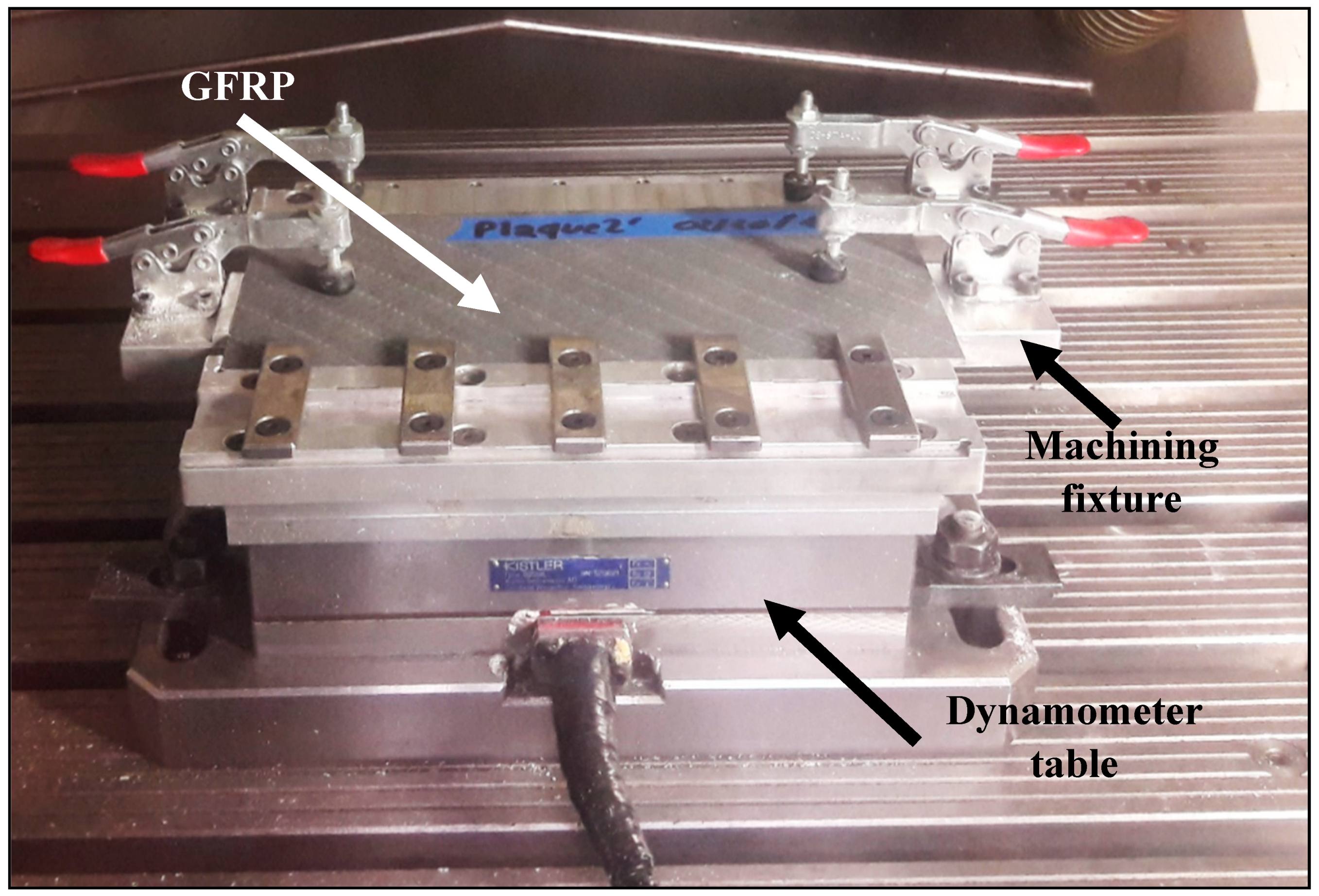



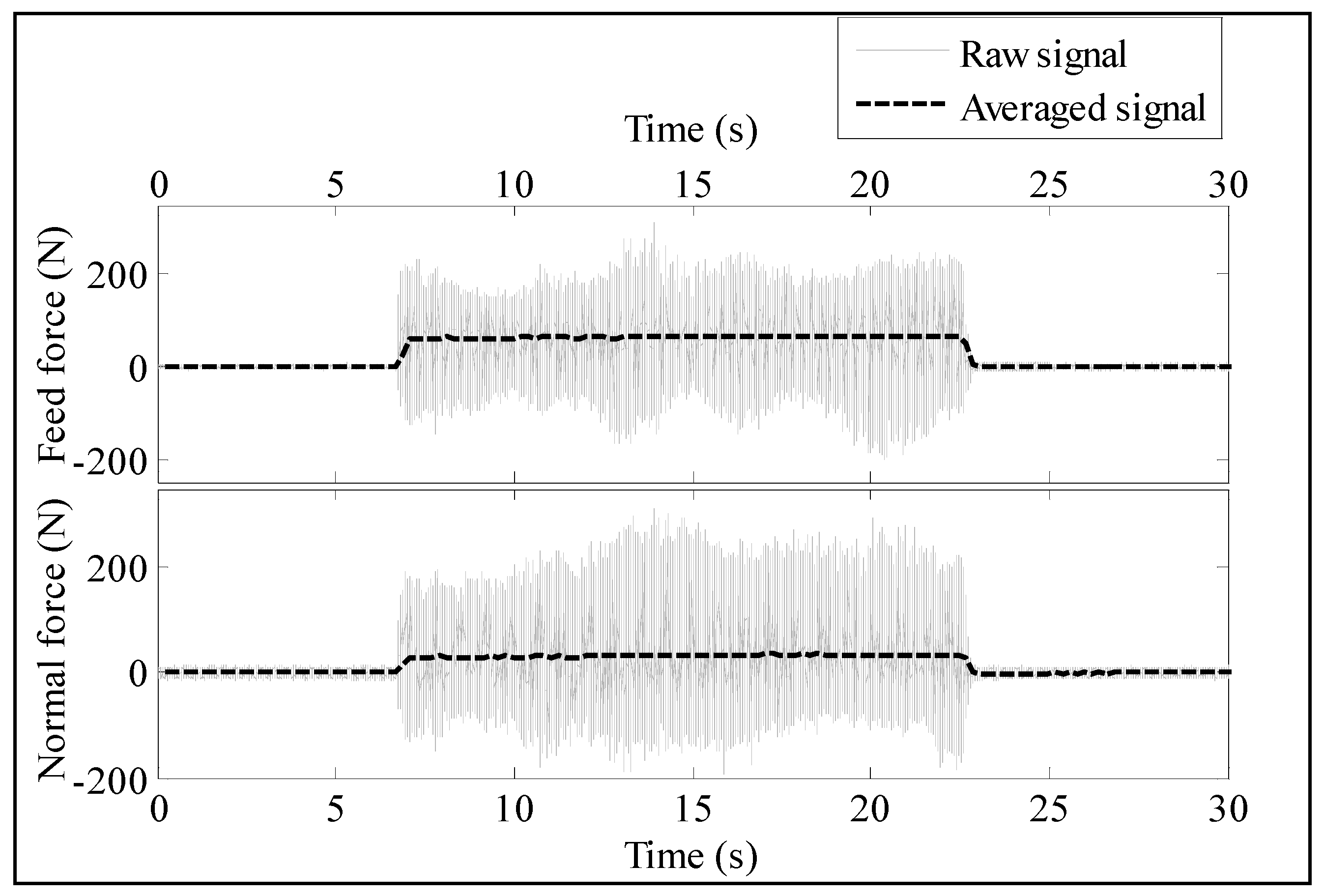
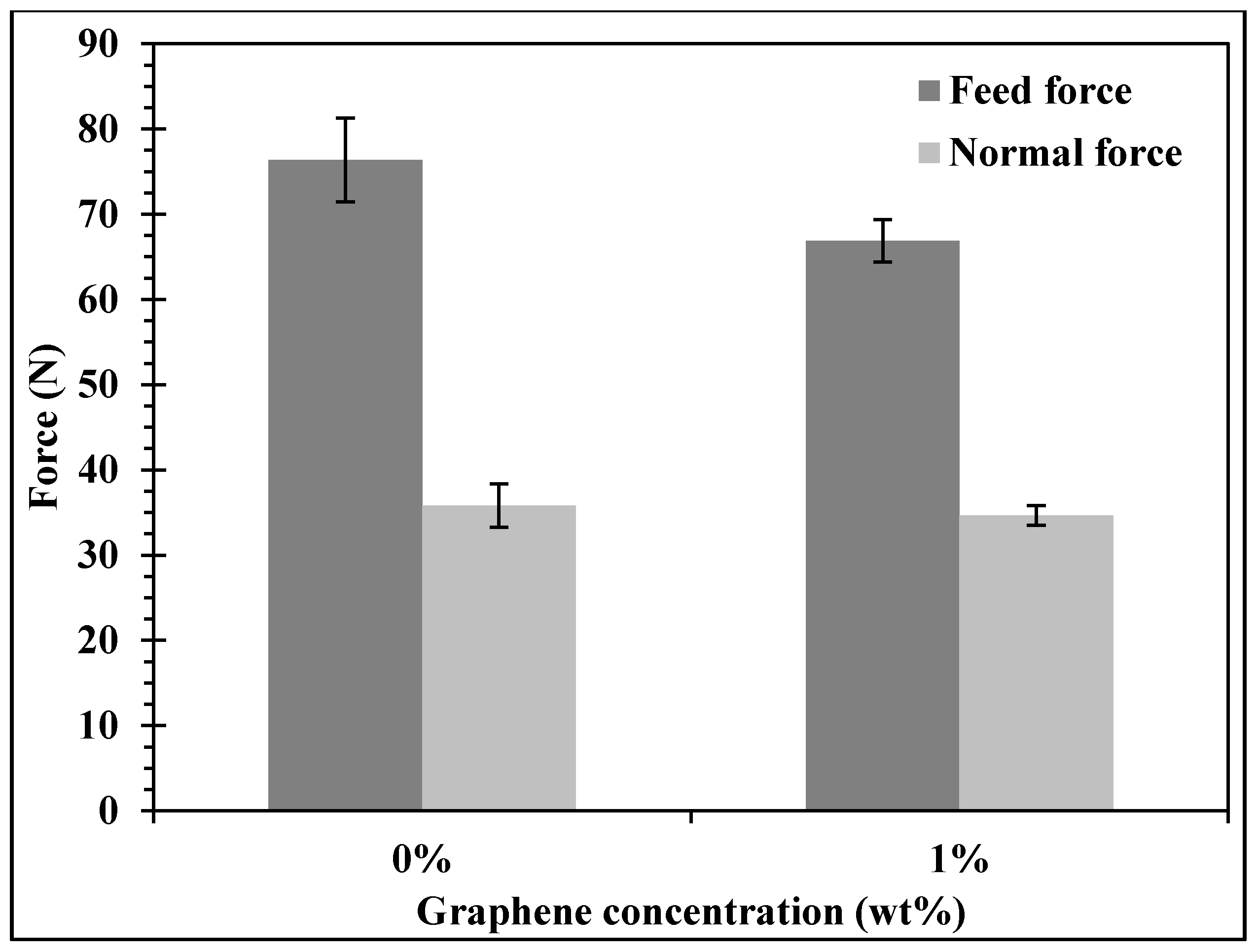
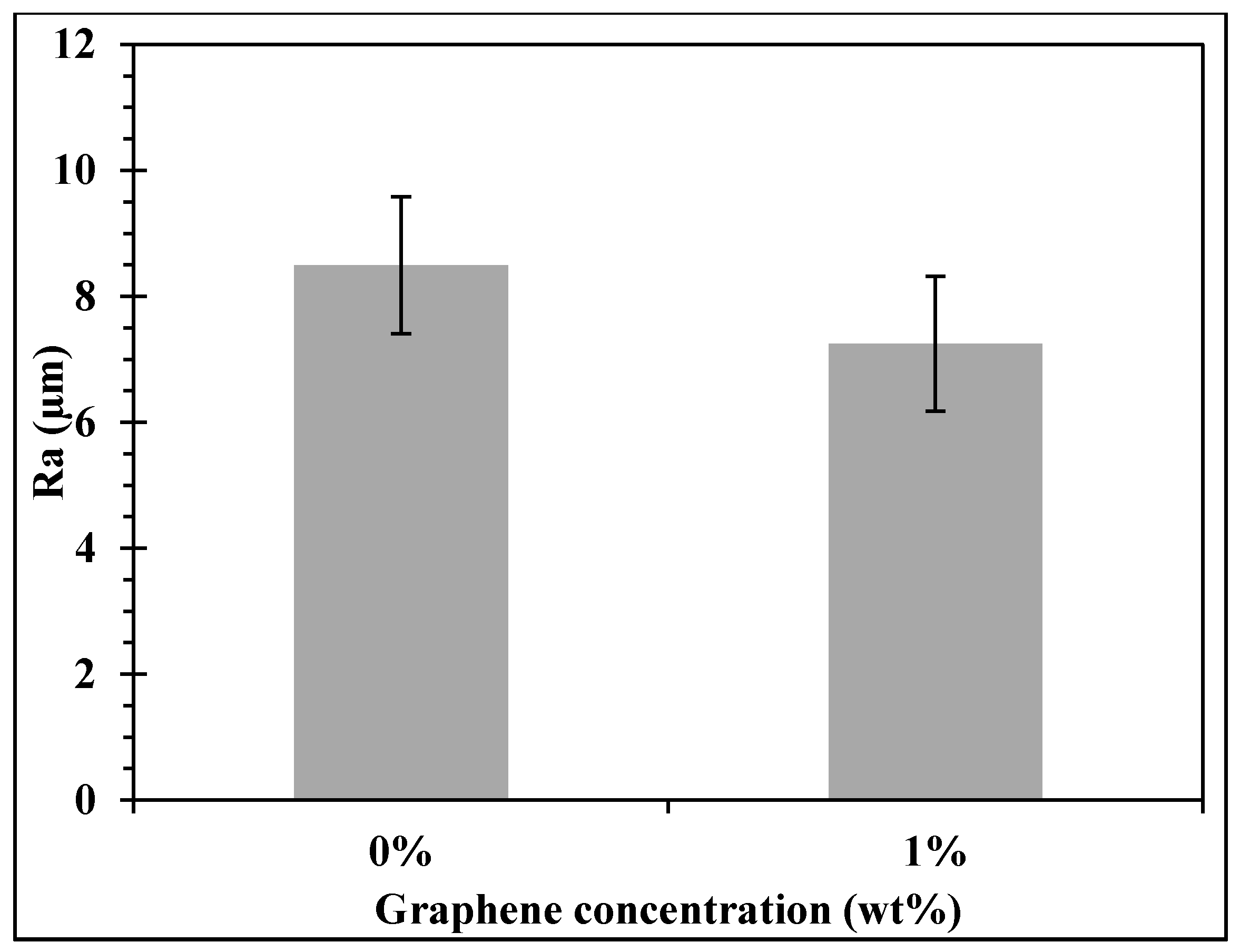
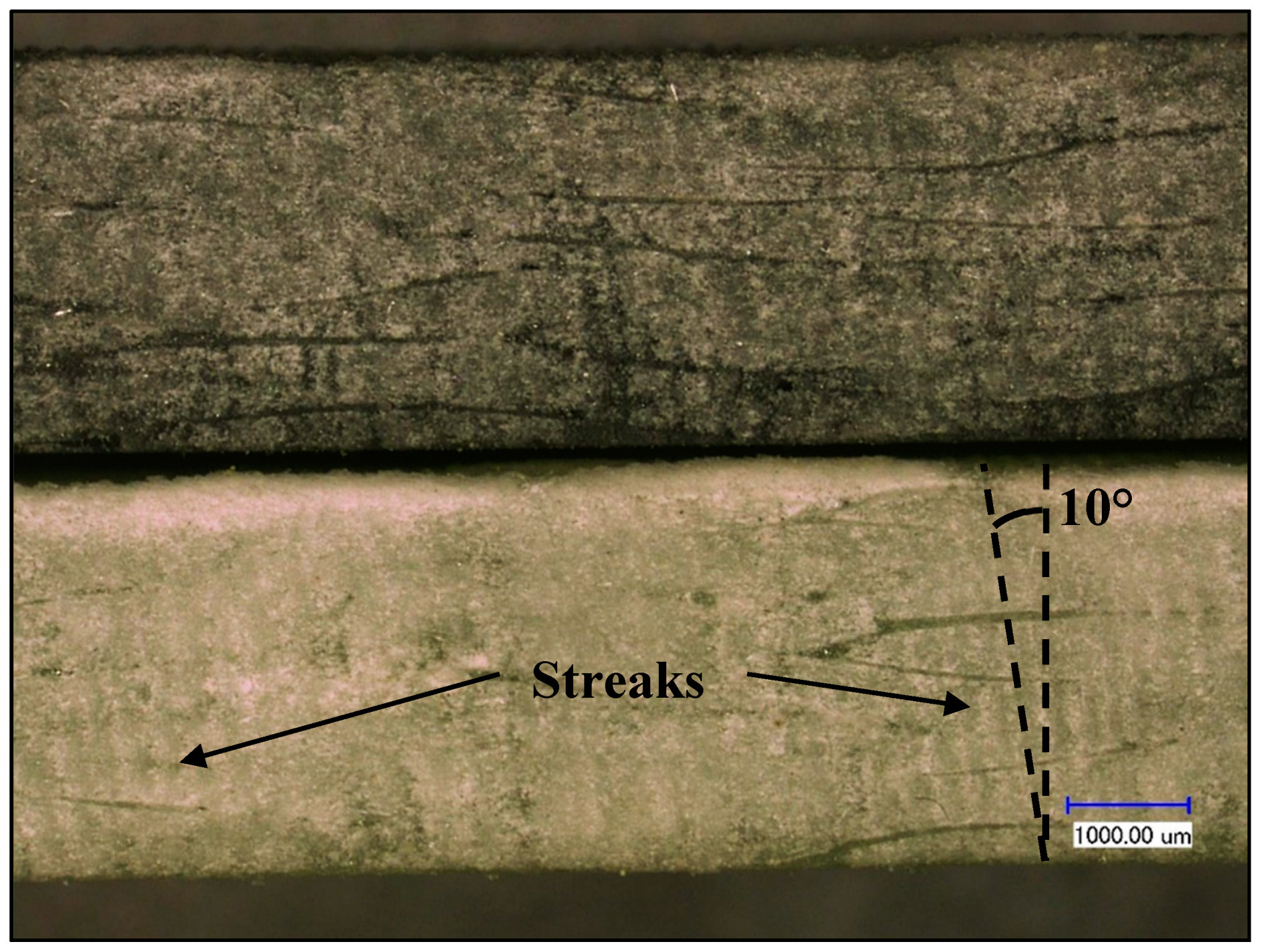

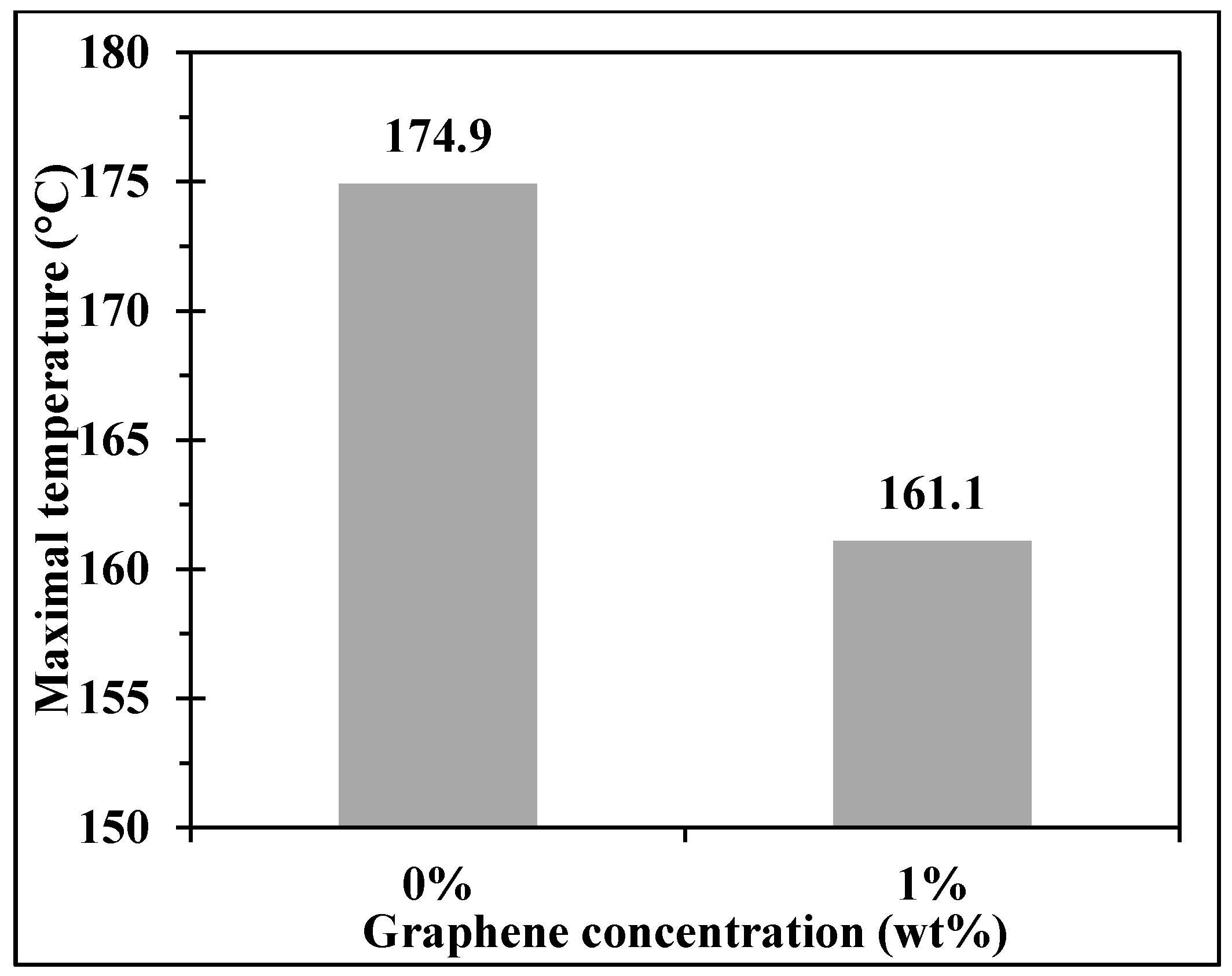
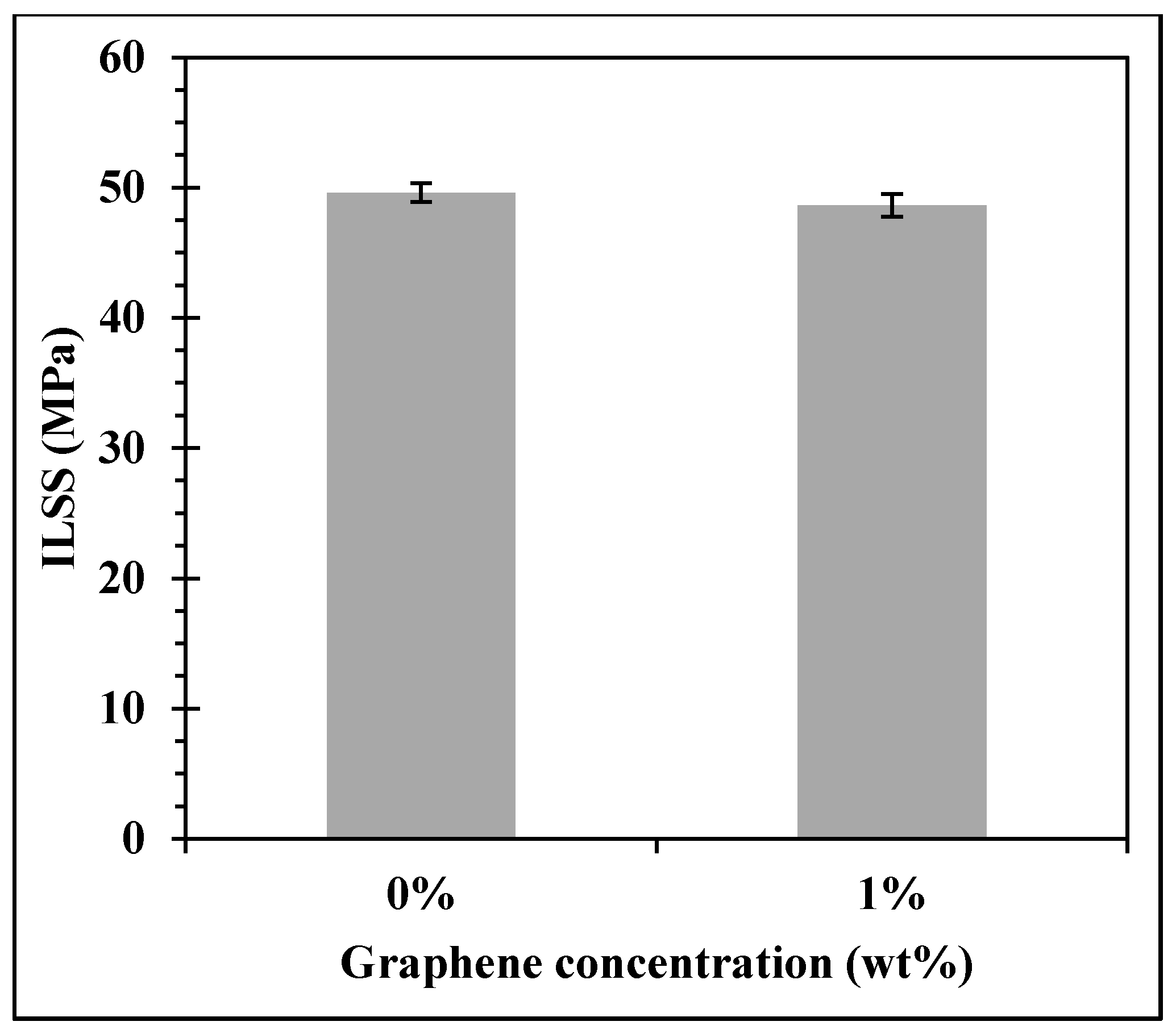
| Material | Diameter | Number of Teeth | Helix Angle | Cutting Speed | Feed Rate |
|---|---|---|---|---|---|
| Diamond coated carbide (CVD) | 3/8” | 6 | 10° | 300 m/min | 0.114 mm/rev |
| Parameter | Ra |
|---|---|
| Sampling length | 2.5 mm |
| Cut-off | 2.5 mm |
| Number of measures | 8 |
| Evaluation length | 20 mm |
| Number of points | 40,000 |
© 2019 by the authors. Licensee MDPI, Basel, Switzerland. This article is an open access article distributed under the terms and conditions of the Creative Commons Attribution (CC BY) license (http://creativecommons.org/licenses/by/4.0/).
Share and Cite
El-Ghaoui, K.; Chatelain, J.-F.; Ouellet-Plamondon, C. Effect of Graphene on Machinability of Glass Fiber Reinforced Polymer (GFRP). J. Manuf. Mater. Process. 2019, 3, 78. https://doi.org/10.3390/jmmp3030078
El-Ghaoui K, Chatelain J-F, Ouellet-Plamondon C. Effect of Graphene on Machinability of Glass Fiber Reinforced Polymer (GFRP). Journal of Manufacturing and Materials Processing. 2019; 3(3):78. https://doi.org/10.3390/jmmp3030078
Chicago/Turabian StyleEl-Ghaoui, Khalid, Jean-Francois Chatelain, and Claudiane Ouellet-Plamondon. 2019. "Effect of Graphene on Machinability of Glass Fiber Reinforced Polymer (GFRP)" Journal of Manufacturing and Materials Processing 3, no. 3: 78. https://doi.org/10.3390/jmmp3030078




